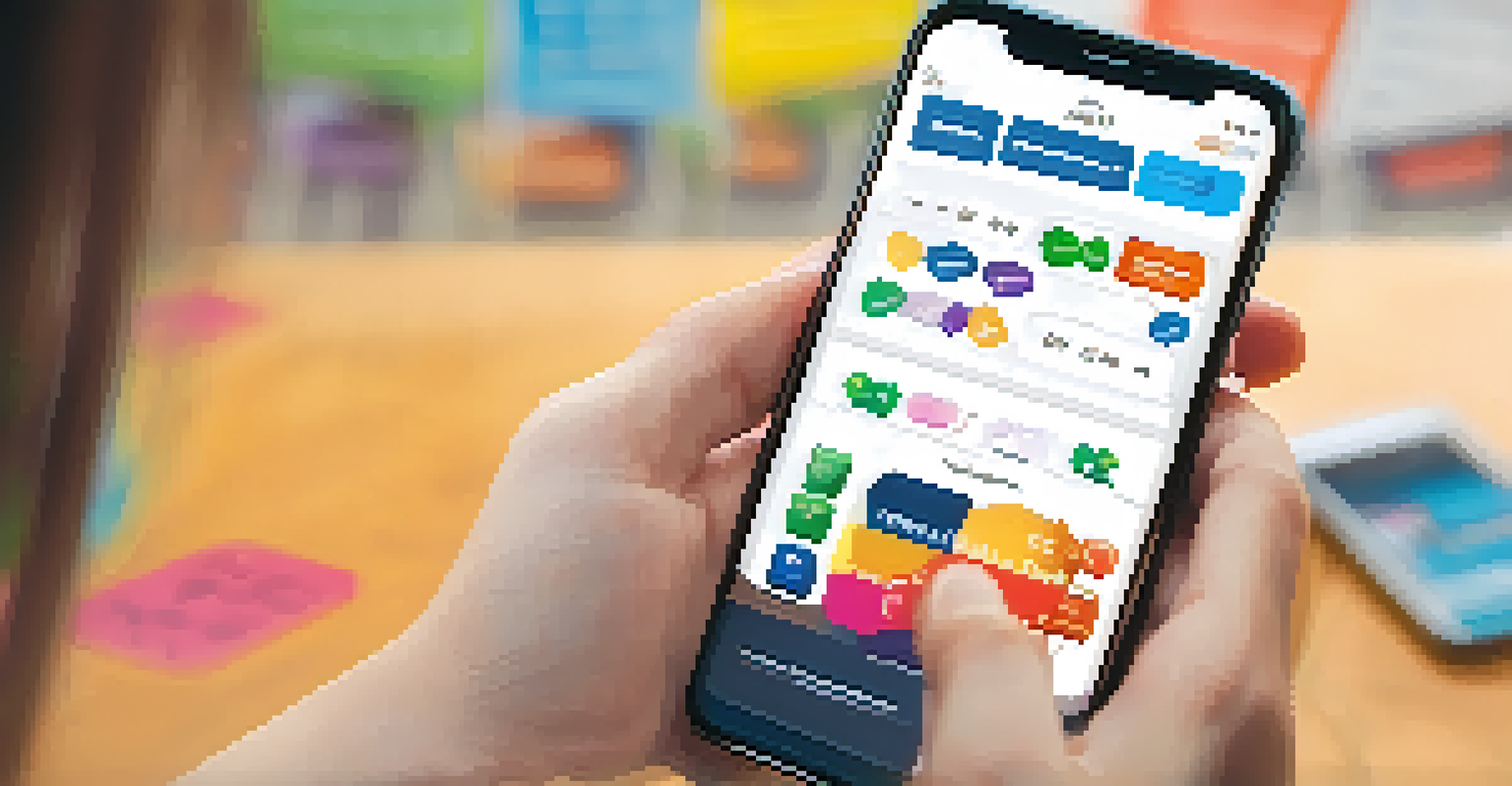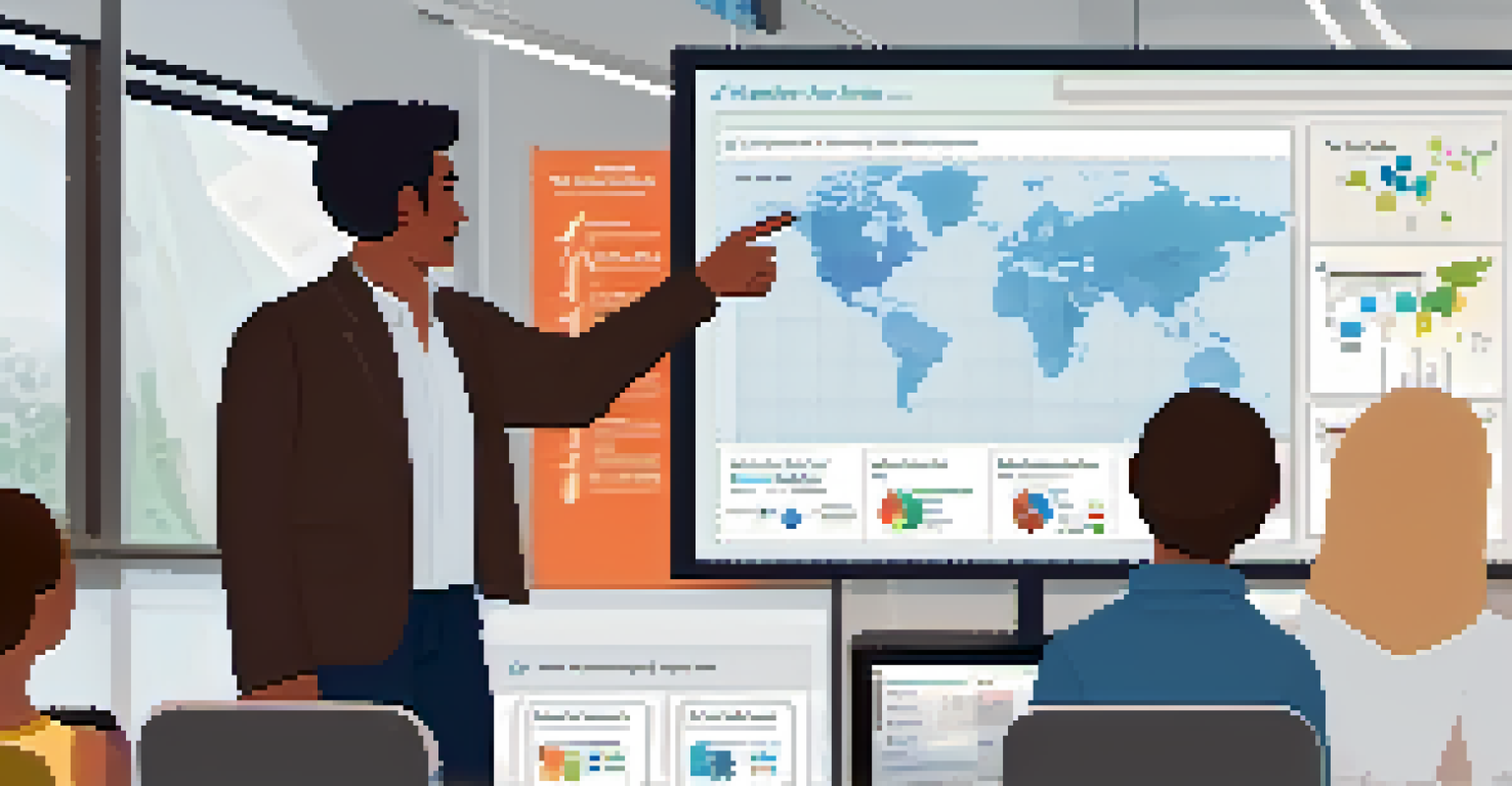The Role of Mobile Technology in Assessing Student Learning

Introduction to Mobile Technology in Education
Mobile technology has revolutionized the way we approach education, making learning more accessible and interactive. With smartphones and tablets in hand, students are no longer confined to traditional classrooms. This shift has opened up new avenues for assessing student learning in real-time, allowing educators to tailor their teaching methods based on immediate feedback.
The great thing about technology is that it allows us to be creative and innovative in our teaching methods.
By integrating mobile devices into learning environments, teachers can utilize various applications designed for quizzes, polls, and assignments. This not only engages students but also provides instant results, enabling educators to adjust their strategies promptly. For instance, a quick poll on a lesson topic can help gauge student understanding right away.
Moreover, mobile technology promotes a more personalized learning experience. Students can learn at their own pace, accessing resources and assessments whenever they need, which can improve their overall performance and confidence in their abilities.
Real-Time Feedback and Assessment
One of the standout features of mobile technology in education is the ability to provide real-time feedback. Tools such as Google Forms and Kahoot! allow teachers to create instant assessments that students can complete on their devices. This immediacy not only keeps students engaged but also gives educators critical insights into understanding where students stand academically.

For example, if students struggle with a particular concept during a lesson, a quick assessment can highlight these gaps. Teachers can then pivot their approach, addressing these issues right away rather than waiting for a scheduled test. This agility in response can significantly enhance the learning process.
Real-Time Feedback Enhances Learning
Mobile technology enables immediate assessments, allowing educators to adjust their teaching strategies based on real-time student performance.
Additionally, real-time feedback fosters a growth mindset among students. They can see their progress immediately, which encourages them to embrace challenges and learn from mistakes. This shift in perspective is crucial for developing resilience and a love for learning.
Accessibility and Inclusivity in Assessments
Mobile technology plays a vital role in making assessments more accessible for all students, including those with disabilities. Specialized apps are designed to accommodate various learning needs, ensuring that everyone has the opportunity to showcase their knowledge and skills. This inclusivity promotes a fairer assessment environment.
Education is not the filling of a pail, but the lighting of a fire.
For instance, voice-to-text applications can help students with writing difficulties express their thoughts more easily. Similarly, visual learners can benefit from interactive quizzes that incorporate images and videos, making the assessment process more engaging and effective.
As a result, educators can create a more diverse array of assessment methods, catering to different learning styles. This not only enhances student engagement but also leads to a more accurate understanding of each student's capabilities.
Gamification of Learning Assessments
Gamification is another exciting aspect of mobile technology that has transformed student assessments. By incorporating game-like elements into quizzes and tests, educators can make learning more enjoyable and motivating. This approach can significantly increase student participation and enthusiasm.
For example, platforms like Quizizz allow students to earn points and badges for completing assessments, turning what could be a stressful experience into a fun challenge. This friendly competition encourages students to strive for improvement, fostering a desire to learn.
Promoting Inclusivity in Assessments
Specialized mobile applications cater to diverse learning needs, ensuring equitable assessment opportunities for all students.
Moreover, gamified assessments can provide valuable data on student performance. Teachers can track progress over time and identify trends, allowing for targeted interventions that help students succeed.
Data-Driven Insights from Mobile Assessments
Mobile technology enables educators to gather and analyze data in ways that were previously unimaginable. With each assessment taken on a mobile device, valuable data is generated that can inform teaching practices. This data-driven approach allows for a more nuanced understanding of student learning.
For instance, teachers can easily identify which concepts their class struggles with and adjust their curriculum accordingly. This level of insight can lead to more effective teaching strategies that cater to the specific needs of students, ultimately enhancing learning outcomes.
Additionally, tracking student progress over time helps educators identify trends and patterns. This information can be invaluable for making informed decisions about curriculum changes, resource allocation, and interventions.
Enhancing Collaboration Through Mobile Technology
Mobile technology also fosters collaboration among students, which can be beneficial for assessments. Tools like Slack or Microsoft Teams allow students to work together on projects, share resources, and provide feedback to one another. This collaborative approach can deepen understanding and enhance critical thinking skills.
For example, students can use mobile apps to create group presentations or study guides, drawing on each other's strengths and knowledge. This peer interaction not only enriches the learning experience but also prepares students for real-world teamwork.
Gamification Boosts Student Engagement
Incorporating game-like elements into assessments makes learning more enjoyable, motivating students to actively participate and improve.
Furthermore, collaborative assessments can promote accountability and responsibility among students. When they know their peers are counting on them, they are more likely to engage fully and perform to the best of their abilities.
Challenges and Considerations in Mobile Assessments
While mobile technology offers numerous benefits for assessing student learning, it also presents certain challenges. One major concern is the digital divide; not all students have equal access to mobile devices or reliable internet connectivity. This disparity can lead to inequities in assessment opportunities.
Additionally, the reliance on technology can sometimes distract students from the task at hand. Notifications, social media, and other apps can divert attention during assessments, potentially affecting performance. Educators must find ways to minimize these distractions to ensure that assessments accurately reflect student learning.

Lastly, as with any technology, privacy and data security are significant considerations. Educators must ensure that the tools they use comply with regulations and protect student information, building trust in the assessment process.